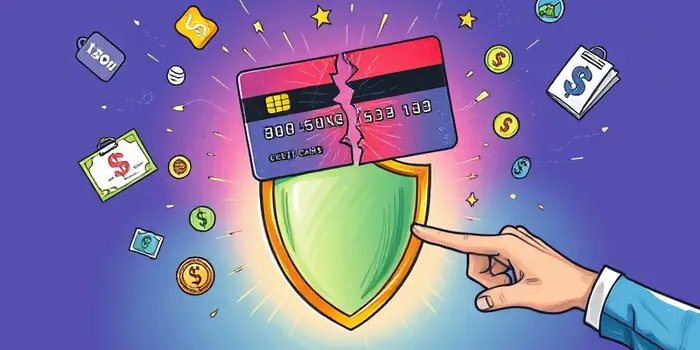
Every second counts when your credit card goes missing or is stolen. Having a clear, actionable plan can save you time, stress, and potential financial loss. In this guide, we outline the steps you need to take immediately, how to prevent future fraud, and how to recover fully after an incident.
The moment you realize your card is missing, contact your card issuer immediately. Most major banks and networks operate 24/7 hotlines specifically for lost or stolen cards. Alternatively, many issuers now offer mobile app features to freeze or lock your card instantly, cutting off access to anyone trying to use it.
Next, check your account activity online or in your bank’s app. Under the Fair Credit Billing Act, you have 60 days to dispute unauthorized charges. Record any fraudulent transactions you spot, including dates, amounts, and merchant names. If you suspect identity theft beyond just your card, place a fraud alert or security freeze with one or more credit bureaus to prevent new accounts from being opened in your name.
Finally, request an expedited replacement card. Depending on your issuer and geographic location, you could receive a new card within 24 hours, even when traveling abroad. Ensure your contact details are current so the replacement arrives without delay.
Staying vigilant is key to spotting irregularities before they escalate. Sign up for text and email alerts on all transactions, especially foreign currency and online purchases. This immediate feedback system helps you report suspicious international transactions promptly rather than discovering them weeks later on a statement.
Beware of small “test” charges under a dollar—they are often fraudsters checking card validity. If you see one, dispute it immediately and monitor the account for follow-up charges. Take advantage of zero-liability policies: Federal protections limit your liability for unauthorized credit card charges if you report promptly.
Free credit monitoring services also help track new account openings under your name. By combining technological safeguards with disciplined habits, you build a strong defense against fraud.
Long-term protection requires consistent security measures. Choose cards with EMV chips and contactless technology, which are far more secure than magnetic stripes. Leverage digital wallets such as Apple Pay or Google Pay for tokenized transactions that hide your actual card number from merchants.
Strengthen your online defenses by enabling two-factor authentication for banking apps and using a password manager to generate and store complex, unique passwords across all financial platforms. Always update software on devices to patch security vulnerabilities.
Stick to these best practices, and you’ll reduce the risk of your information being compromised, even in the most sophisticated scams.
Organizations issuing cards to employees must have a formal emergency protocol. Assemble a “Cardholder Deployment Kit” that contains printed policies, emergency contact lists, and step-by-step procedures. Distribute this kit as part of initial training and refresh it regularly.
During large-scale events like natural disasters, issuers may allow temporary changes to merchant category codes (MCCs) or increased credit limits to facilitate essential purchases such as fuel, food, and shelter. Clearly communicate these temporary policy adjustments to cardholders and ensure they record all transactions for after-action audits.
In addition, designate a central coordinator to manage reports of lost or stolen cards. This role ensures swift communication with issuers and keeps all stakeholders informed. After the incident, conduct a debrief to identify areas for process improvement and update response plans accordingly.
Unexpected emergencies can strain your budget and cash flow. If you must, make at least the minimum payment to avoid late fees and negative marks on your credit report. Although temporary high balances may lower your credit score, consistency in on-time payments will help you recover quickly.
Consider negotiating hardship programs with your issuer or exploring balance transfer offers to lower interest rates temporarily. If you foresee extended financial difficulties, seek advice from credit counseling services. They can guide you through debt management plans and potential consolidation strategies.
Also, explore emergency savings and community-based assistance programs before using credit for essential needs. Establishing a dedicated emergency fund in advance can minimize reliance on credit cards and reduce stress when the unexpected happens.
Document every communication with your card issuer, from phone call logs to email confirmations. Save copies of dispute forms, reference numbers, and names of representatives. If identity theft is involved, file a report with the local police and obtain a copy for your records.
Use the FTC’s IdentityTheft.gov portal to create a personalized recovery plan. Follow guidelines to place extended freezes on credit files, retrieve copies of your credit report, and correct any errors. engage legal counsel if needed to navigate complex disputes or significant financial losses.
Once you receive your replacement card, shred your old card into at least four pieces, including the chip and magnetic strip. Continue monitoring statements for several months to ensure no residual fraudulent activity appears on your account.
While losing or having a credit card stolen can be stressful, a well-prepared action plan keeps you in control. By take control of your financial security, maintaining vigilant monitoring, and documenting every step, you safeguard your assets and peace of mind.
Turn these recommendations into habits. Review your account statements weekly, update security settings regularly, and educate yourself on emerging fraud trends. With preparedness and proactive measures, you can face any credit card crisis confidently and come out stronger on the other side.
References













